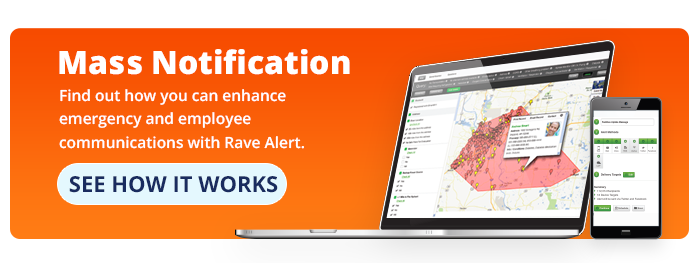15 ans de programme de préparation des hôpitaux et son avenir
In May of 2018, the Hospital Preparedness Program celebrated fifteen years of enhancing the ability of hospitals and healthcare systems to prepare for and respond to public health emergencies. We look at why the program was established, what its objectives are, and where it may be headed in the future.
Prior to the tragic events of 9/11, disaster preparedness rarely focused on healthcare issues. Due to an increase in international terrorism, the majority of efforts focused on repairing infrastructure and meeting the food, shelter and economic needs of displaced persons. Indeed, prior to 2001, the Emergency Preparedness Standards for Hospitals issued by the Joint Commission on Accreditation of Healthcare Organizations primarily concerned bomb threats, floods, and loss of utilities.
The attacks on the World Trade Center and Pentagon highlighted how unprepared the healthcare system was for mass casualty terrorism. When hospitals in New York City and Washington D.C. initiated their disaster response plans, they found they were not adequately prepared for the magnitude of the events. Both hospitals experienced problems with communication, patient tracking, data management, staff support, personnel identification, and overcrowding.
A further terrorist event in 2011 – the mailing of envelopes filled with Bacillus anthracis (the bacterium that causes Anthrax) to media offices and U.S. Senate offices – revealed a different level of fragility in hospital preparedness. Emergency response personnel were asked to investigate countless incidents of “suspicious powder”, but, at the time, few healthcare professionals were familiar with identifying symptoms of the bacterial disease, treating it, or preventing it from spreading.
Federal Response to Shortfalls to Healthcare Preparedness
The lack of fully effective responses to 9/11 and the Anthrax attack prompted the federal government to pass the Public Health Security and Bioterrorism Preparedness and Response Act of 2002. This Act built upon existing programs to establish a National Bioterrorism Hospital Preparedness Program. The initial objectives of the program were for the better preparation of healthcare systems to respond to bioterror attacks and other public health emergencies such as flu pandemics and natural disasters.
In order to help meet the objectives, in 2003 the Health Resources and Services Administration (HRSA) made $498 million available in funding for the development and implementation of cooperative agreements which would improve collaboration between healthcare systems. In order to be eligible for a Hospital Preparedness Program grant, healthcare entities would have to use the funds to complement their existing preparedness programs in the areas of:
- Improving bed and personnel surge capacity.
- Increasing decontamination and isolation capabilities.
- Strengthening interoperable communication systems.
- Bed tracking and personnel management.
- Hospital evacuation planning.
- Fatality management planning.
- Emergency training, education, drills and exercises.
However, in the aftermath of Hurricane Katrina in 2005, it became evident grants had been used to fund individual hospital preparedness programs, rather than develop regional cooperative agreements. Congress responded by transferring responsibility for the Hospital Preparedness Program to the Office of the Assistant Secretary for Preparedness and Response (ASPR) – tasking the department with developing Healthcare Coalitions for better information sharing and response coordination.
How the Program has Developed Since 2005
Since 2005, Healthcare Coalitions have developed from being relatively small cooperative agreements to multi-agency organizations that not only count healthcare facilities among its members but also local, state and federal jurisdictional authorities. There are now 470 Healthcare Coalitions around the country comprised of over 31,000 members. During the past fifteen years, the Hospital Preparedness Program has overseen an investment of nearly $6 billion in the nation’s healthcare system.
The investment has been effective in changing the way healthcare is delivered during public health emergencies. Whereas prior to 2005, competing hospitals were reluctant to share information, issues existed about liability exposure, and few healthcare entities collaborated with emergency management or public health, there are now many examples of how Healthcare Coalitions have mitigated the impact of public health emergencies to ensure the best possible outcome for the greatest number of patients.
The 2009 H1N1 “Swine Flu” Pandemic
Although the 2009 H1N1 “Swine Flu” pandemic claimed more than ten thousand lives, the outcome could have been much worse had it not been for collaboration between multiple agencies to rapidly distribute anti-virus vaccines, and to test, diagnose, and treat an estimated 57 million Americans who contracted the disease.
Hurricane Sandy in 2012
Hurricane Sandy in 2012 proved to be the first major test of public-private coordination since Hurricane Katrina. Under the Hospital Preparedness Program, patients from twelve evacuated hospitals and other healthcare facilities in New York State were successfully relocated, and more than two thousand healthcare professionals were brought in from other jurisdictions.
The 2013 Boston Marathon Bombing
Within minutes of two explosive devices being detonated near the finish line of the 2013 Boston marathon, the city’s hospitals went into emergency response mode. It has been calculated that – due to the Hospital Preparedness Program, training, drills, and coordination between healthcare facilities – more than 140 lives were saved.
The U.S. Ebola Outbreak that Never Happened
It is not known how many lives were claimed worldwide by the Ebola outbreak of 2013-2016 due to massive underreporting. However, in the United States, thanks to a coordinated effort to test, isolate, and treat hundreds of people potentially at risk from the highly-contagious and life-threatening virus, there was only one fatality.
Ongoing Issues and Where the Program May Be Headed
Current ASPR guidance requires hospitals in the Hospital Preparedness Program to have reliable emergency communication systems. Most healthcare facilities have improved their communication capabilities, but issues exist with the modes of communication used and how they might be impacted by a natural disaster or infrastructure damage.
Furthermore, whereas some states and municipalities have developed healthcare-specific emergency operations centers (HEOCs), there are issues about how these EOCs communicate with each other. Without compatible systems being deployed, the risk exists command and control functions will become isolated and dysfunctional during an emergency event that is rapidly expanding in scale and impact.
These issues need to be resolved before plans to create a coordinated national disaster health response system can be realized. The coordinated national system would not only be used in times of emergencies, but also to resolve the current healthcare crisis which sees 50 percent of emergency departments operating at over capacity, and 500,000 ambulances diverted each year from the nearest hospital due to emergency department overcrowding.
What has been achieved in the fifteen years of the Hospital Preparedness Program is certainly worth celebrating, but there is still a long way to go.





